

Leading World Meteorological Organization officials and experts in numerical weather prediction (NWP) came together at ECMWF on 8 June for a symposium to mark the departure of Erland Källén from the Centre after eight years as Director of Research.
Speakers at the event included some of Professor Källén’s former PhD students and long-standing collaborators as well as UK Met Office Chief Scientist Stephen Belcher.
They presented new results in dynamic meteorology, operational NWP and climate science. Former ECMWF Director David Burridge, Professor Källén and Director-General Florence Rabier spoke about the Centre’s past, present and future.
The symposium was attended by the Secretary-General of the WMO, Petteri Taalas, and the Chief of the WMO's World Weather Research Division, Paolo Ruti, as well as current and former colleagues.
"It is a great privilege to have been ECMWF's Director of Research for eight years. Further advances in NWP are needed and I would like to thank all speakers for coming here to talk about how we got where were are today and how we can move forward," Professor Källén said.
Dynamic meteorology
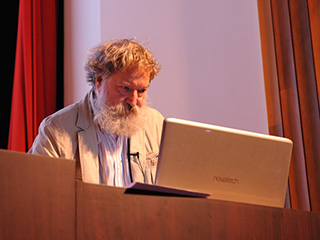 |
Raymond Pierrehumbert, Halley Professor of Physics at the University of Oxford, gave a talk on planetary wave resonance and multiple equilibria. He pointed out that the issue of resonance in planetary atmospheric waves has still not been fully resolved decades after it was first raised. Simplified models imply the possibility of such resonance leading to an infinite amplitude. The issue of how, in the real atmosphere, such amplitudes are damped continues to be the subject of research. |
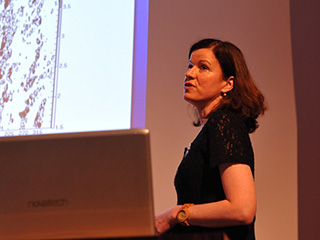 |
Nedjeljka Žagar, Professor of Meteorology at the University of Ljubljana, spoke about the role of tropical analysis uncertainties in global predictability. She explained that uncertainties in the initial conditions of forecasts in the tropics also affect forecast skill in the mid-latitudes. One reason for the uncertainties is a lack of weather observations. New wind data, such as from the Aeolus satellite to be launched at the end of this year, could help to address the problem. |
 |
Hans Huang, the Head of Weather Modelling and Prediction at the Centre for Climate Research Singapore, talked about convective-scale NWP in Singapore. He said forecasts in Singapore are difficult because tropical weather systems are complex, develop rapidly, are short-lived and are driven by variable winds. Successive model upgrades have, however, improved the prediction of rainfall and storm cells. A collaborative effort will be needed to make further improvements. |
Climate science
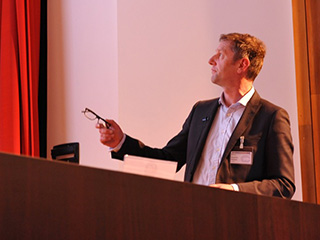 |
Professor Belcher gave a talk on climate science post-COP21. He said the drivers of climate science after the Paris Agreement would include the global energy balance; mitigation strategies; weather and climate hazards; and the impacts and opportunities of mitigation and adaptation. The energy balance problem is more fundamental than rising near-surface temperatures, which are a symptom. Studies show that energy continues to accumulate in the deep ocean. |
The talks were followed by lively question and answer sessions. Some of the scientists present emphasised the value of reanalysis for climate studies.
They pointed out that the use of NWP models enables reanalyses to provide a more complete picture of climate change across the globe than observational datasets.
ECMWF’s past, present and future
 |
Dr Burridge, a member of staff from the start and ECMWF Director from 1991 to 2004, took the audience on a whistle-stop tour of the history of NWP and of ECMWF. He pointed out that, within four years of creating the Centre, a step change in global numerical weather prediction had been achieved. However, this had only been possible with a lot of help from visitors and other institutions. Dr Burridge concluded by wishing ECMWF good luck with the new ten-year Strategy adopted in 2016. |
 |
Professor Källén emphasised the role of collaboration in his overview of some of the main items on ECMWF’s research agenda. He said a lot of work remains to be done in data assimilation and modelling to further improve medium-range weather forecasts. ECMWF’s strategy to achieve this includes an Earth system approach to modelling and analysing the state of the atmosphere; probabilistic predictions using ensemble forecasts at a horizontal resolution of 5 km by 2025; and scalability across the NWP chain. |
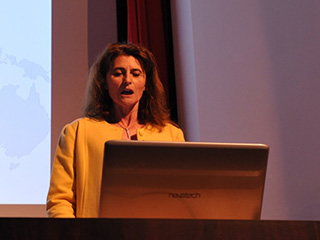 |
Dr Rabier said ECMWF had played a unique role over the last four decades by addressing the most difficult problems in NWP that no single country could resolve on its own. She said the Earth system approach being pursued by the Centre means more coupled processes will be included. Another major aspect of ECMWF’s new ten-year Strategy is an emphasis on ensemble forecasts. Dr Rabier, who “once was a deterministic girl”, made it clear that these will become the Centre’s main output. |
The 10bn-pound question
Petteri Taalas asked Professor Källén what he would do if he had 10 billion pounds to spend on observing systems.
ECMWF’s Director of Research replied that investment in satellite-based observing systems would no doubt bring the greatest benefits because of their global reach.
But he added that other areas, such as progress in modelling, computing resources and the development of expertise in ECMWF's Member States, must not be neglected.
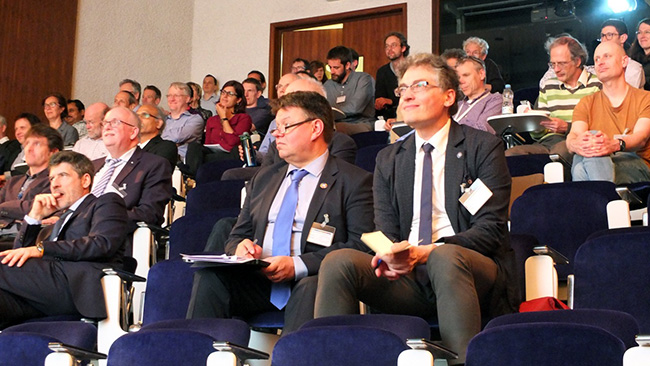
The Secretary-General of the WMO, Petteri Taalas (centre), and the Chief of the WMO's World Weather Research Division, Paolo Ruti, were among those attending the symposium.
The results of recent experiments with ensemble forecasts at ECMWF presented by Dr Rabier also elicited much interest.
The experiments suggested that there is a complex relationship between forecast skill, lead time, forecast resolution and the number of ensemble members used.
Did the results mean that ECMWF should prioritise greater ensemble member numbers over higher resolution?
Dr Rabier said there would have to be a discussion and priorities would have to be agreed with the Centre’s Member States.
Professor Källén concluded the symposium by thanking everybody for coming to the Centre. “I am absolutely delighted with the outcome,” he said, “and I would like to thank all of you who have come to share this day with me.”
